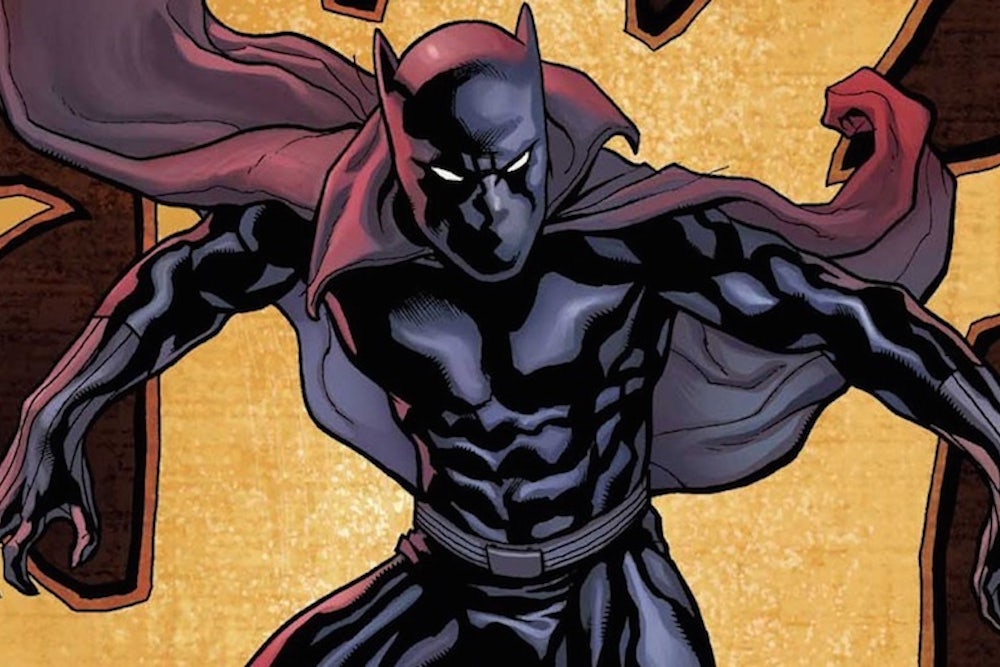Last May, the Atlantic's Ta-Nehisi Coates interviewed Marvel comics editor Sana Amanat about diversity in superhero comics. It was an issue close to both of them personally: Amanat has spearheaded the reinvention of Ms. Marvel as a Muslim-American superhero while Coates has often written about the importance of comic book series, like the multinational mutant team the X-Men were to him while growing up. Now Coates will get a chance to try his own hand at the genre as the writer of the forthcoming Black Panther series “A Nation Under Our Feet,” to be drawn by Brian Stelfreeze and released next year. The series takes its title from a Pulitzer Prize–winning book about the roots of African-American political identity under slavery and Reconstruction by the historian (and New Republic contributor) Steven Hahn.
The source material is promising, and Coates will bring to the task the formidable writing skills he displayed in his Atlantic cover story last year, “The Case for Reparations,” and in Between the World and Me, his searing new book on the African-American condition. And he's hardly the first celebrated writer to try his hand at writing comics.1 But penning Black Panther presents a particularly unique challenge, given the history of the form: Reviving a black character in a field that remains largely monochromatic will be no small feat.
Superhero comics have long had a tortured relationship with issues of diversity and ethnic identity. Many of the early superhero comics from the 1930s to the 1960s were created by first- and second-generation European immigrants. Comics scholars like Gerard Jones and Larry Tye have speculated that the dual identity of characters like Superman and Batman was a metaphor for the process of Americanization experienced by the Jewish-American creators of those heroes, and also for ethnic passing. Characters like Clark (Superman) Kent and Bruce (Batman) Wayne were faux WASPs while non-white characters, especially African-Americans, were relegated to the role of comic side-kicks (most notoriously Ebony White, the minstrel-inflected servant of The Spirit).
The Black Panther, created by Jack Kirby and Stan Lee in a 1966 storyline in the Fantastic Four series, was a decisive break from this pattern by being the first black superhero. Visually modelled after the actor Sidney Poitier and the prince of a hidden African Kingdom, the Black Panther was an emblem of black pride. By coincidence the character emerged at the same time the Black Panther party was forming in the real world (Coates’s father would be a member of that party). Although formally unconnected, both the Black Panther character and the Black Panther party are outgrowths of the political upheavals of the 1960s.
If the Black Panther was a pathbreaker, few other heroes have followed the trail he blazed, aside from outliers like Black Lightning, Cyborg, and Storm. For a variety of reasons, the superhero universes of DC and Marvel comics remain overwhelmingly white. Both companies have found it more profitable to mine older heroes like Superman and Spider-Man rather than develop new characters, in part because creators are now reluctant to sign over complete copyright control of characters, which was the norm of the industry since the 1930s but increasingly unacceptable to writers and artists. Some African-American creators, notably the writer/artist Trevor Von Eeden, have confronted systematic racism in the comics industry. It’s telling that most of those who have worked on Black Panther comics over the years have been white. Further, some fans have resisted attempts to reinvent older heroes like Green Lantern and Thor as non-white.
In effect, the comic book industry remains closer to the monoculture of 1939 than the diversity of 1966, let alone 2015. By enlisting Ta-Nehisi Coates to bring Black Panther back to life, Marvel is taking a commendable step toward rectifying that.
In the 1920s, Ring Lardner, perhaps the foremost short story writer in America, worked on the baseball-themed comic strip You Know Me Al from 1922 to 1925. Noir master Dashiell Hammett, best known as the author of The Maltese Falcon, co-created the comic strip Secret Agent X-9, which he worked on from 1934 to 1935. In the 1940s, future New Republic film critic Stanley Kauffmann and thriller writer Patricia Highsmith both got their start writing comic books. In the early 1970s, famed science fiction and fantasy writer Samuel Delany had a brief stint writing Wonder Woman, while fellow sci-fi master Harlan Ellison wrote The Hulk. More recently, prize-winning literary novelist Jonathan Lethem did a much-praised revitalization of the Marvel series Omega the Unknown.
